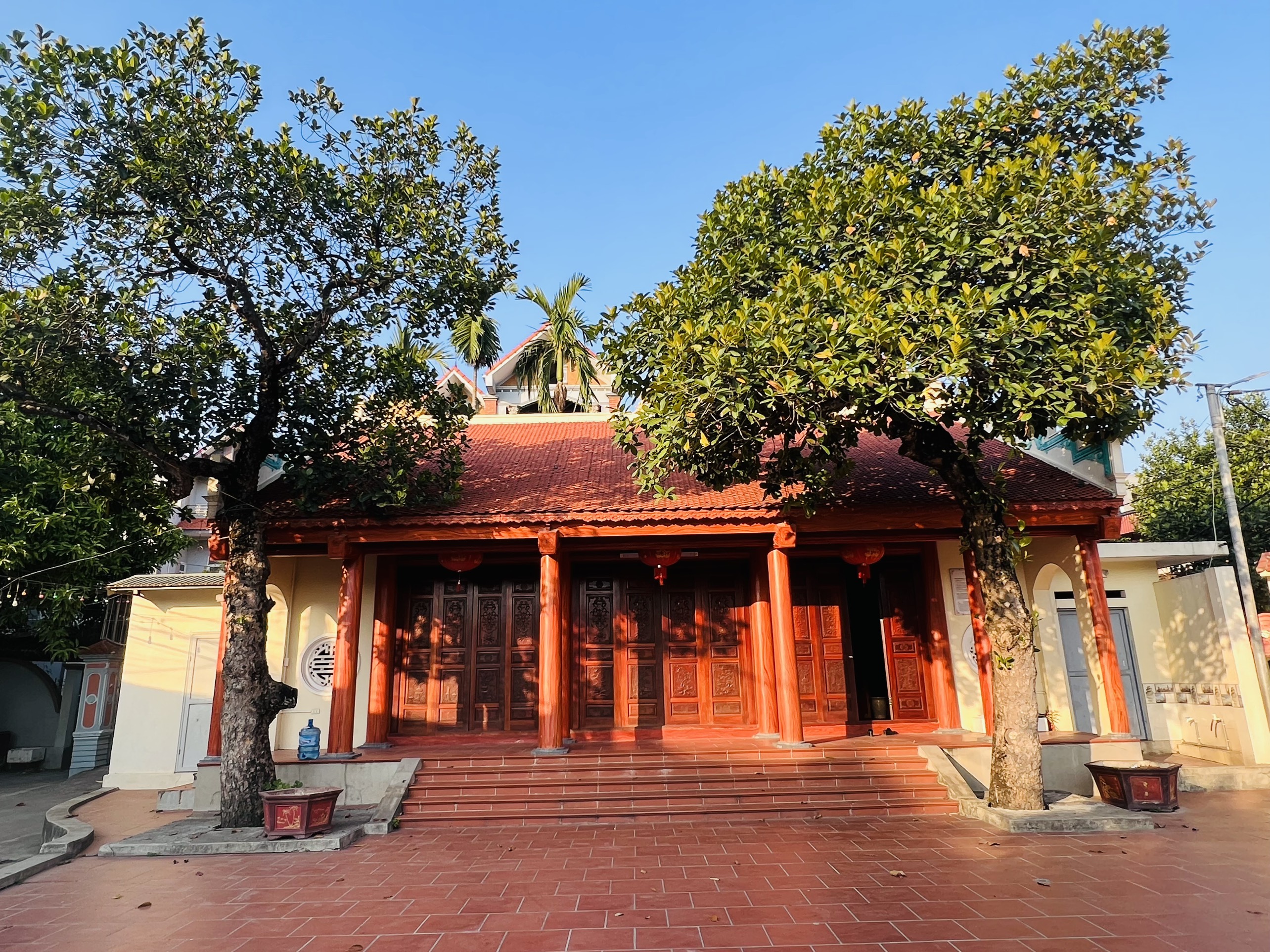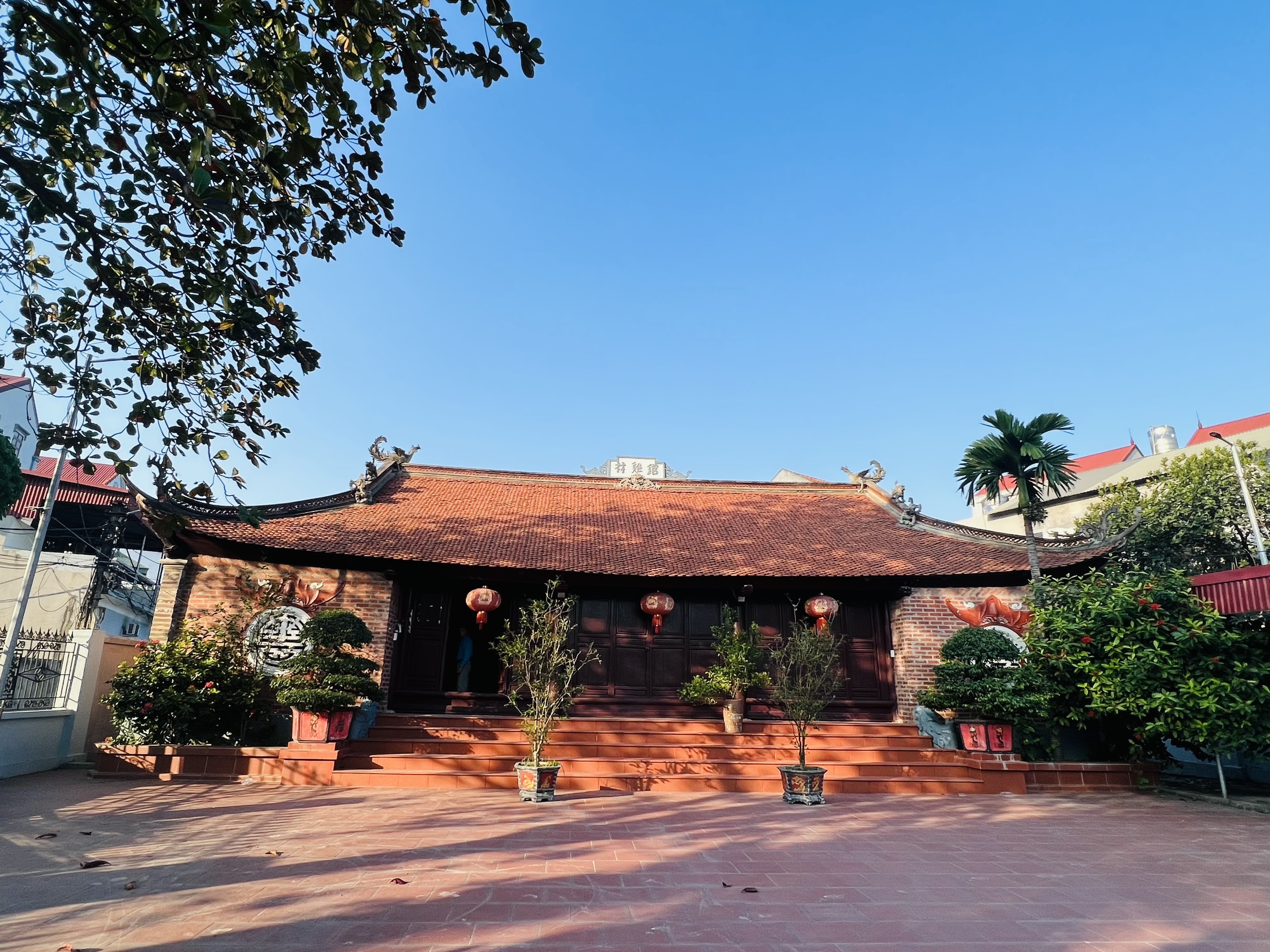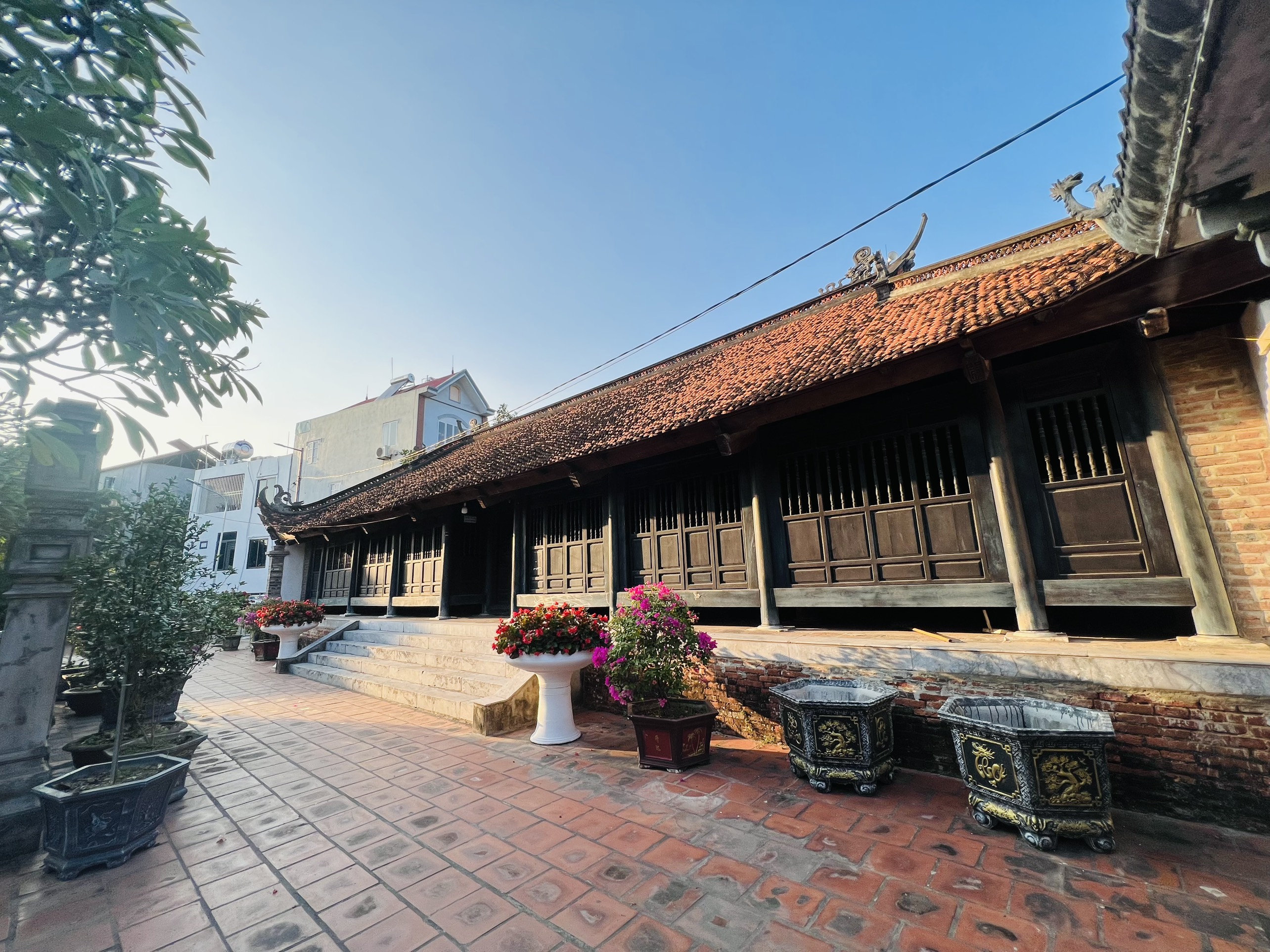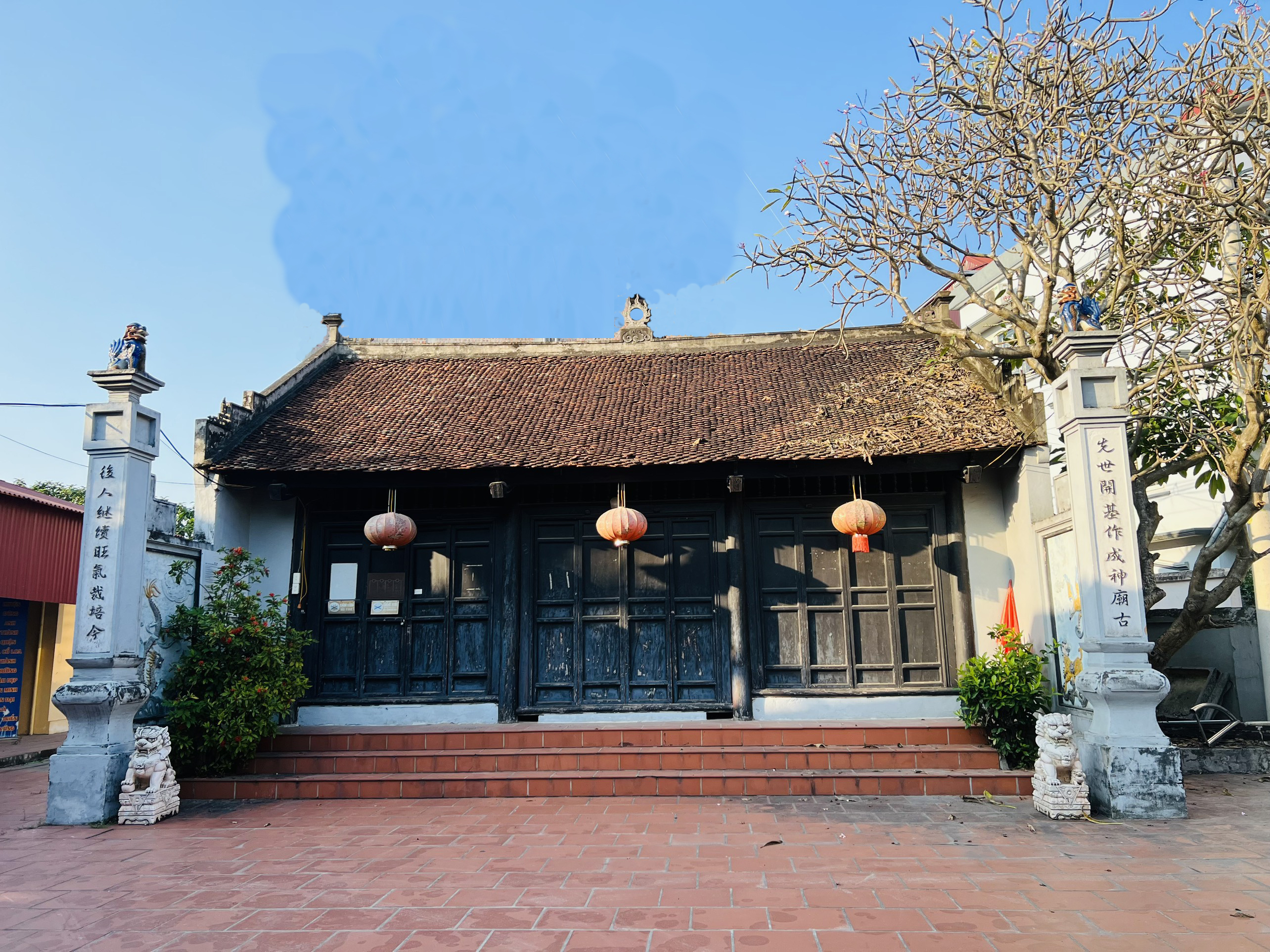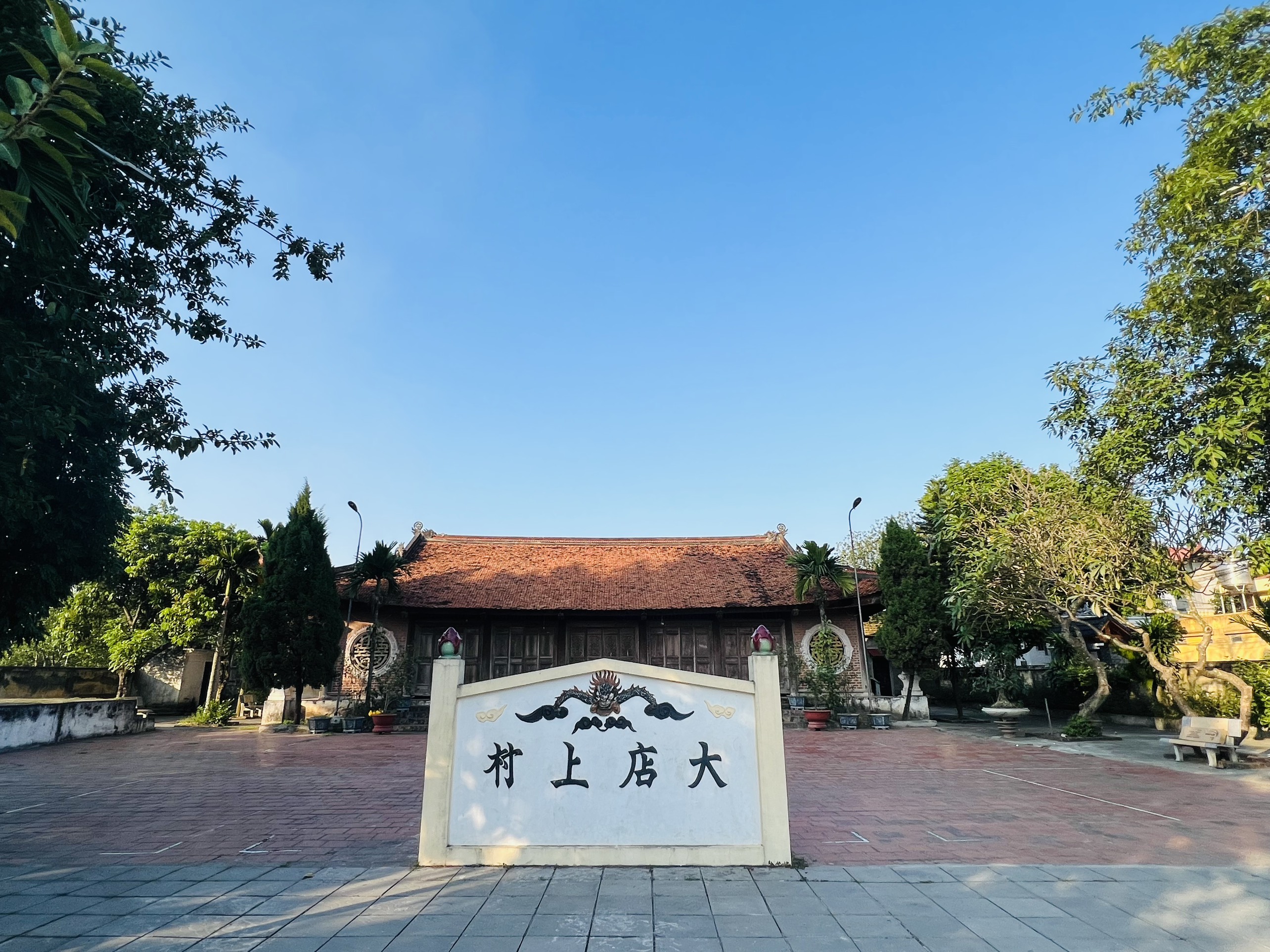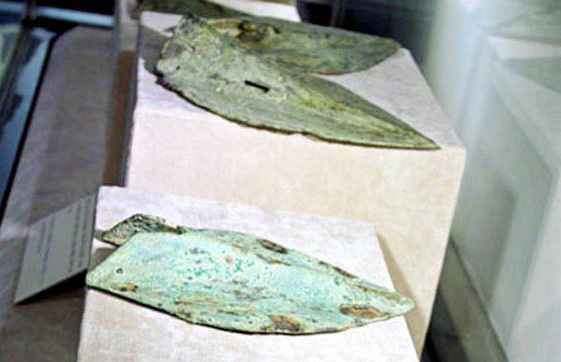
Ma Tre used to be a cemetery, located to the South West of South gate of Cổ Loa citadel, to the left of its was a road opened from Sa market to An Dương Vương temple, between the Middle and Internal Rampart.

Bronze artifacts were found inside the bronze drum at Ma Tre relic
On June 21, 1982, while lowering paddy plots in Ma Tre area, the teenagers who contributed to that of household Tai Kim Quang explored a bronze drum containing more than 200 brass objects of various kinds.
Upon being aware of the information, Cổ Loa commune People’s Committee in combination with Hanoi Department of Culture and Information and other competent authorities conducted another investigation on the said place and organized sessions for items revoke.
Except for the scattered ones, total number of objects recovered in the drum so far is 247 pieces of the following types: production tools 194 pieces (143 plowshares, 8 picks, 4 shovels, 2 chisels, 34 axes, 2 havesting knives, 1 knife), weapons 29 pieces (16 spears, 5 daggers, 8 arrows), utensils 7 pieces (1 whole drum, 3 broken jars, 1 basin, 1 tray), musical instruments 3 pieces (1 whole drum, 1 broken drum, 1 rattle), 15 unidentified objects and 19.5 kg of broken copper.
The researches on the collection of Ma Tre copper objects reveal that the place contains typical objects of Đông Sơn culture such as drums, containers, jars, axes, daggers, spears, and specific objects of locality similar to the form of Đông Sơn in Ma river. Square-heel axe (boot-shaped axe), heart-shape axe head are typical for Đông Sơn culture and some objects gained by exchange such as shovel, fish-tail spear.
Findings in Ma Tre as well as copper arrows in Cầu Vực and objects in Nhoi commune may prove that those places are property storages in the context of big social changes.
About date, the object with earliest date is the drum Cổ Loa I, borned in the flourishing period of Đông Sơn culture. The object with late date is the drum Cổ Loa II, Minh Khi axe and spear, Ban Lang coin (around the 2nd – 1st century B.C)
The drum at the explored time was lying in 30 cm deep under the field surface, on back, covered by yellow clay. The upmost cultivating layer in black grey colour contained some broken pieces of Cổ Loa pottery.
A storage of objects is included in a copper drum and the drum itself is a storage of rich historical materials for the investigation on the water rice agriculture using copper ploughshares and development of metal metallurgy.
